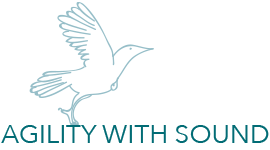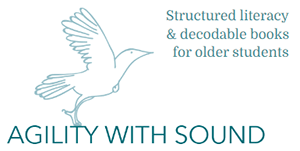Agility With Sound begins with a simple diagnostic test, to identify exactly which skills are weak, where reading is breaking down for this child. The test is designed to be used by a novice. A flow chart then tells you which activities are relevant for this child, and where to start.
The Basics
If a child struggles with the fundamentals of reading, they begin with hearing the sounds in three letter words: two consonants and one vowel. The colour-coded grapheme tiles support the child in developing this awareness.
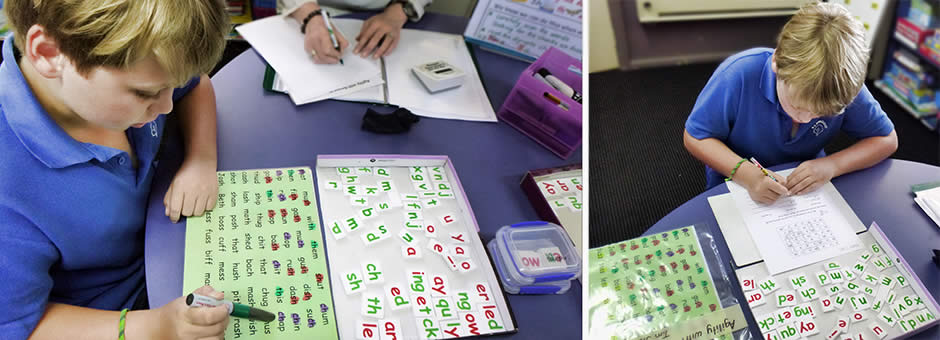
Agility With Sound – Grapheme Tiles
The child learns to manipulate those sounds – change hat into bat, bat into but and but into bun. They develop the phonological awareness and processing, the mental agility with sound, which is known to be the precursor of skilled reading. The software package included in Agility With Sound supports and reinforces this, giving the children the many hours of practice they may need.
Repeating Combinations
Once the child has more or less mastered that skill, he or she is ready to discover how these sounds form repeating combinations, the chunks that skilled readers recognise unconsciously and instantly. If you know hat as ‘h’ and ‘at’ and have the ability to substitute initial sounds, then you also know sat and mat and unfamiliar words like vat.
It is one thing to go from hat to sat to cat. It’s quite another to go from hat to top to sit: that requires a layer of skill that many children do not yet possess, and that many dyslexics may never master without intervention. But skilled reading requires that these chunks are analysed and blended effortlessly and rapidly – and this develops with practice. Agility With Sound provides that practice in multiple rewarding ways, including the popular head-tummy-tail cards.
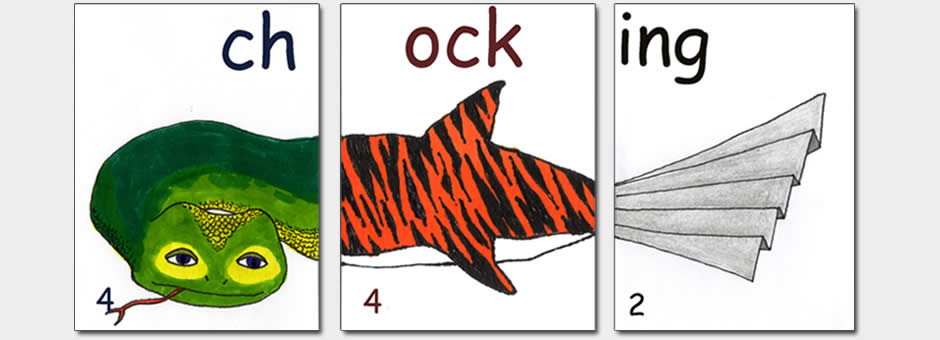
Agility With Sound – Head Tummy Tail cards
Onwards To Reading
The child can now decode three letter words. The child is ready to read. At this point, Agility With Sound introduces stories that are comprised almost entirely of three letter words, words that the child already knows how to decode. The child is reading using the strategy that skilled readers do.
Of course, it’s not enough to simply decode: the goal of skilled reading is to comprehend the text. The stories are in a format that requires the child to think about the content of the story. Every so often, there is a space for the child to provide a specified illustration:
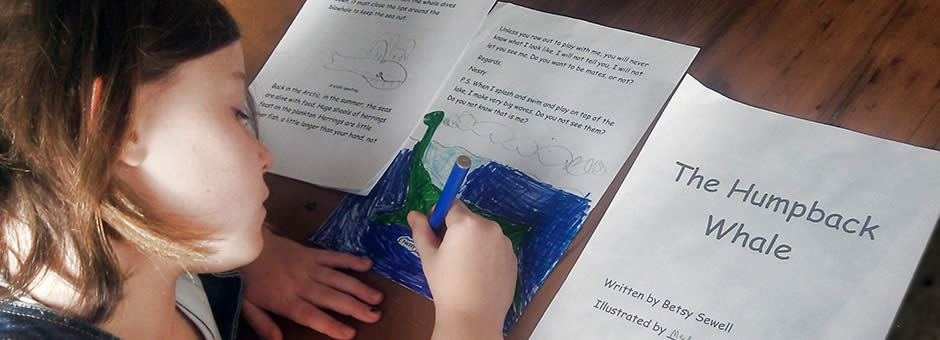
Agility With Sound – using drawing to enhance comprehension
To do this, the child must discover the essence of the preceding passage, they must build a mental image, summarise, infer, and monitor their reading. Every story will have a few unfamiliar words that are incorporated in such a way that the child can infer an approximate meaning. Some stories are unfinished: the child must predict the ending. All the component skills of comprehension are built into the story.
Expanding Skills
From there on, the skills of reading are introduced one by one, step by step, in a highly structured, sequenced way. The sounds are introduced one at a time: after the three letter words, ‘ch’, ‘sh’ and ‘th’ are incorporated (as in shot, much, that) and then basic three letter CVC (consonant-vowel-consonant) words with common endings: running, copper, funny, etc.
The phonological awareness activities become more sophisticated: change tackle to tickle, to trickle, to tricky. More and larger chunks are processed, and at every step of the way there are stories and activities to practice the skills. The blends are added in, then more complex structures, followed by more complex vowel sounds, the minor patterns (eg.: ‘ea’ making ‘e’ as in bread), the patterns of prefixes and suffixes.
Now, let’s look at who can use Agility With Sound.
